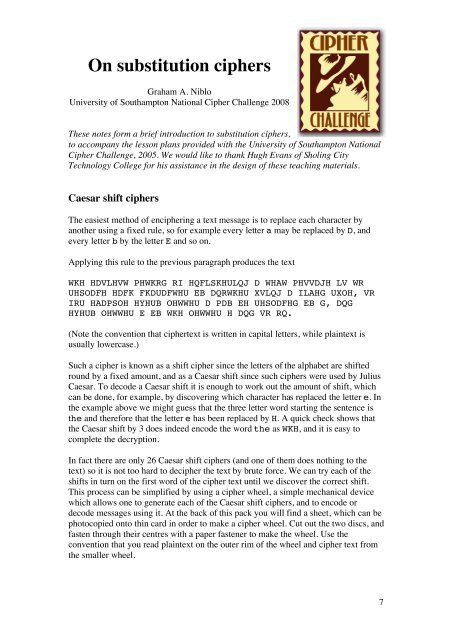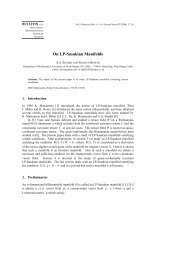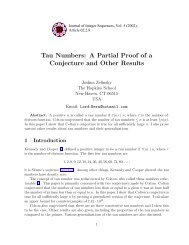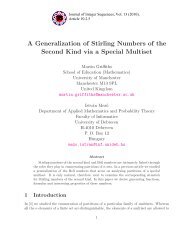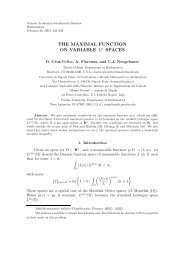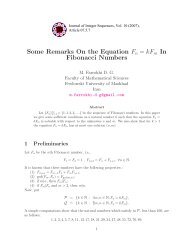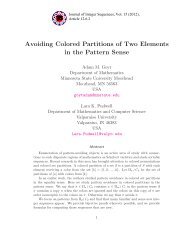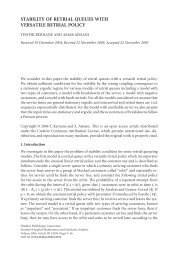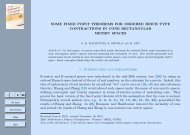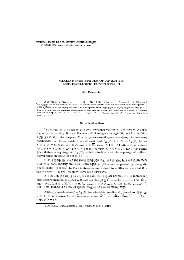Teachers' notes and lesson plans - University of Southampton
Teachers' notes and lesson plans - University of Southampton
Teachers' notes and lesson plans - University of Southampton
- No tags were found...
Create successful ePaper yourself
Turn your PDF publications into a flip-book with our unique Google optimized e-Paper software.
On substitution ciphersGraham A. Niblo<strong>University</strong> <strong>of</strong> <strong>Southampton</strong> National Cipher Challenge 2008These <strong>notes</strong> form a brief introduction to substitution ciphers,to accompany the <strong>lesson</strong> <strong>plans</strong> provided with the <strong>University</strong> <strong>of</strong> <strong>Southampton</strong> NationalCipher Challenge, 2005. We would like to thank Hugh Evans <strong>of</strong> Sholing CityTechnology College for his assistance in the design <strong>of</strong> these teaching materials.Caesar shift ciphersThe easiest method <strong>of</strong> enciphering a text message is to replace each character byanother using a fixed rule, so for example every letter a may be replaced by D, <strong>and</strong>every letter b by the letter E <strong>and</strong> so on.Applying this rule to the previous paragraph produces the textWKH HDVLHVW PHWKRG RI HQFLSKHULQJ D WHAW PHVVDJH LV WRUHSODFH HDFK FKDUDFWHU EB DQRWKHU XVLQJ D ILAHG UXOH, VRIRU HADPSOH HYHUB OHWWHU D PDB EH UHSODFHG EB G, DQGHYHUB OHWWHU E EB WKH OHWWHU H DQG VR RQ.(Note the convention that ciphertext is written in capital letters, while plaintext isusually lowercase.)Such a cipher is known as a shift cipher since the letters <strong>of</strong> the alphabet are shiftedround by a fixed amount, <strong>and</strong> as a Caesar shift since such ciphers were used by JuliusCaesar. To decode a Caesar shift it is enough to work out the amount <strong>of</strong> shift, whichcan be done, for example, by discovering which character has replaced the letter e. Inthe example above we might guess that the three letter word starting the sentence isthe <strong>and</strong> therefore that the letter e has been replaced by H. A quick check shows thatthe Caesar shift by 3 does indeed encode the word the as WKH, <strong>and</strong> it is easy tocomplete the decryption.In fact there are only 26 Caesar shift ciphers (<strong>and</strong> one <strong>of</strong> them does nothing to thetext) so it is not too hard to decipher the text by brute force. We can try each <strong>of</strong> theshifts in turn on the first word <strong>of</strong> the cipher text until we discover the correct shift.This process can be simplified by using a cipher wheel, a simple mechanical devicewhich allows one to generate each <strong>of</strong> the Caesar shift ciphers, <strong>and</strong> to encode ordecode messages using it. At the back <strong>of</strong> this pack you will find a sheet, which can bephotocopied onto thin card in order to make a cipher wheel. Cut out the two discs, <strong>and</strong>fasten through their centres with a paper fastener to make the wheel. Use theconvention that you read plaintext on the outer rim <strong>of</strong> the wheel <strong>and</strong> cipher text fromthe smaller wheel.7


